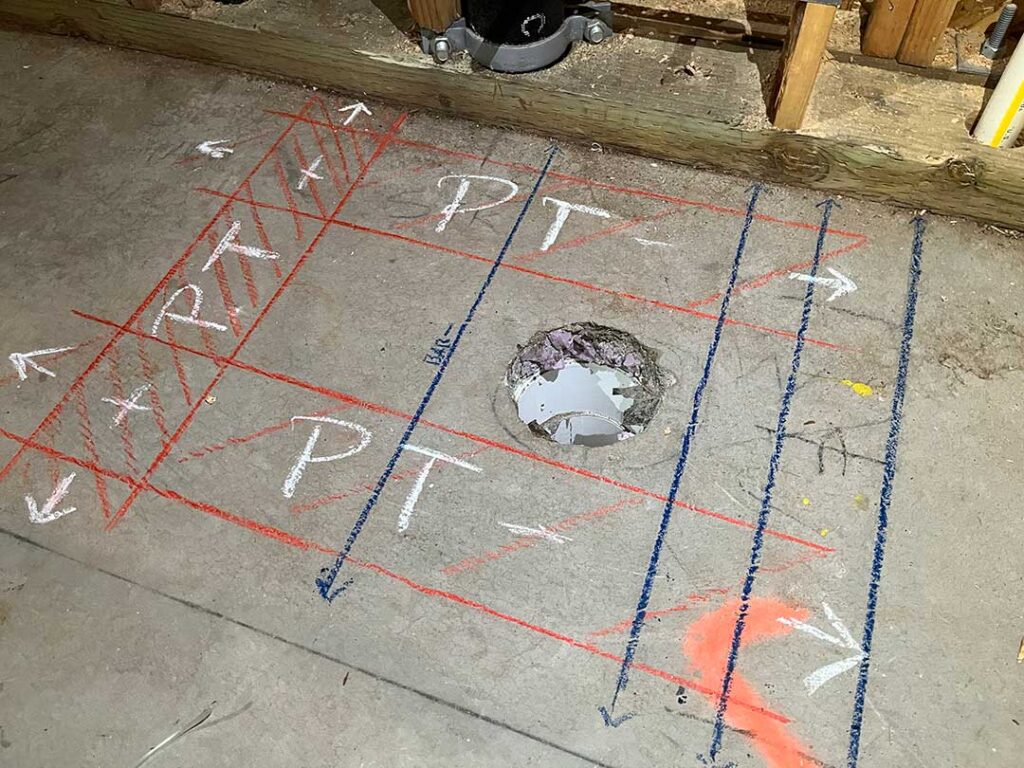Efficient Concrete Scanning Techniques for Construction Jobs
Unveil the Transformative Power of Concrete Scanning in Taking Full Advantage Of Effectiveness and Safety
Concrete scanning has arised as an important tool in the building industry, using unmatched benefits in enhancing project efficiency and guaranteeing safety standards. The transformative power of concrete scanning lies in its capability to supply comprehensive understandings and real-time information, reinventing how tasks are planned and carried out.
Significance of Concrete Scanning
Guaranteeing the structural stability and safety of building and construction projects starts with the critical action of carrying out complete concrete scanning. Concrete scanning is a non-destructive approach utilized to detect and map subsurface aspects within concrete frameworks.
The relevance of concrete scanning can not be overemphasized, as it plays a vital role in protecting against mishaps, reducing task hold-ups, and guaranteeing the long-term sturdiness of the construction. By determining possible hazards before the building stage starts, builders can execute proper precaution and make notified choices pertaining to the design and execution of the job. In addition, concrete scanning aids in optimizing task timelines and budget by preventing unanticipated costs and hold-ups that may occur due to unpredicted blockages within the concrete. Eventually, purchasing complete concrete scanning is an aggressive approach that boosts both performance and security in construction tasks.
Exactly How Concrete Scanning Functions
Concrete scanning operates as a critical tool in construction projects by using advanced technologies to spot and map subsurface components without causing structural damage. Ground Permeating Radar (GPR) and Electromagnetic Induction (EMI) are two key methods made use of in concrete scanning.
During the scanning process, the data gathered is examined in real-time, permitting prompt recognition of potential threats or challenges beneath the surface. This information aids in decision-making, making certain that building and construction activities proceed safely and efficiently. In addition, 3D imaging software application can be utilized to create topographic maps of the subsurface aspects, even more improving task planning and implementation. By utilizing these innovative modern technologies, concrete scanning dramatically minimizes the threat of expensive damages and injuries on building sites.
Benefits of Concrete Scanning
One of the key advantages of concrete scanning is the ability to discover and find embedded objects such as rebar, post-tension wires, and avenues properly. Concrete scanning assists in preparation and designing much more successfully, as it provides specific info regarding the location and deepness of structural components.

Case Research Studies: Concrete Scanning Success

In another situation, a building company utilized 3D concrete scanning to examine the condition of maturing concrete structures in a historic building. The detailed scans provided useful understandings into the level of deterioration and aided prioritize maintenance initiatives successfully. By proactively dealing with locations of concern identified through scanning, the business had the ability to prolong the lifespan of the framework and make sure resident safety and security.
These study emphasize the transformative power of concrete scanning in enhancing efficiency, accuracy, and safety and security in building projects.
Implementing Concrete Scanning in Projects
Carrying out innovative scanning technologies throughout building and construction jobs has actually come to be progressively essential for boosting precision and safety. By incorporating concrete scanning right into project preparation and implementation, construction teams can identify prospective threats, such as rebar or post-tension cables, hidden within concrete structures. This proactive strategy minimizes the risk of mishaps, hold-ups, and pricey rework, eventually bring about extra efficient job timelines and budget plans.
To carry out concrete scanning Learn More Here successfully, task managers must work together carefully with seasoned scanning experts to determine one of the most suitable scanning methods for the specific project requirements. Involving scanning professionals from the very early stages of a project allows the team to produce thorough scanning strategies that resolve crucial locations of issue and make certain thorough data collection.
In addition, including concrete scanning into regular task operations can streamline decision-making procedures, as real-time scan information gives immediate insights into the condition of concrete structures - Concrete Scanning. This data-driven approach assists in informed analytical and enables teams to make modifications quickly, fostering a culture of performance and security throughout the project lifecycle

Conclusion
To conclude, concrete scanning plays an essential function in boosting effectiveness and safety in building and construction projects. By making use of innovative modern technology to map and find out underlying frameworks within concrete, this process helps to stop expensive errors, ensure architectural honesty, and decrease risks on website. With the capability to reveal hidden components and supply exact data, concrete scanning verifies to be a useful tool for optimizing project results and maximizing overall success.
Concrete scanning is a non-destructive technique used to discover and map subsurface elements within concrete structures. Furthermore, concrete scanning helps in maximizing project timelines and spending plan by preventing unexpected expenses and delays that may occur due to unexpected obstructions within the concrete. One notable situation study involves a massive renovation project where concrete scanning played a vital function in making sure job success.In another instance, a building and construction business used 3D concrete scanning to analyze the condition of aging concrete frameworks in a historic structure. By integrating concrete scanning into job planning and execution, building and construction groups can recognize possible risks, such as rebar or post-tension cable televisions, hidden within concrete frameworks.